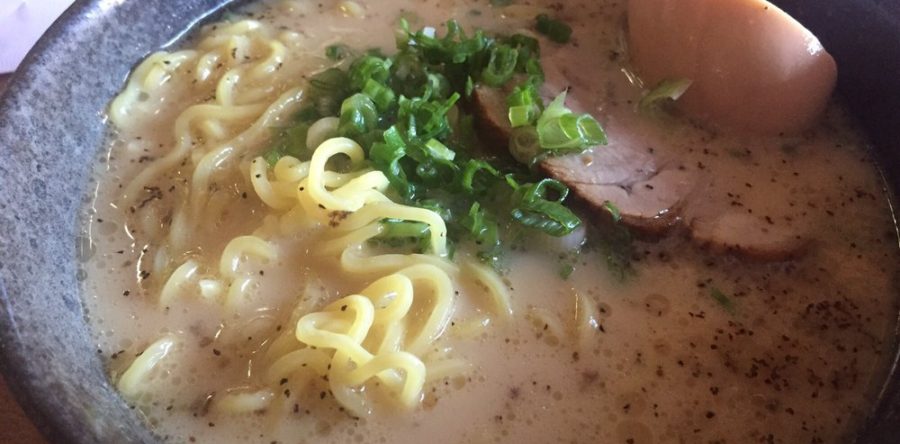Comfort foods? Would we really place noodles in that category?
Maybe we should.
Typically when we think of comfort foods, let’s be honest, they mostly are sweet, greasy, calorie filled, artery plugging, liver sand blasting and just plain taste good as heck.
Their purpose is not to make us feel healthy. Just feel good. Forget the pain.
When was the last time you drank a beer for your health?
Please don’t answer that.
How about quietly gobbling down some rich chocolate cake? Licked up some exquisite lemon pie? Melted milk chocolate in your mouth and on your fingers, then licked the fingers clean?
Please don’t get us started on a Philly Cheese Steak sandwiches or double decker hamburgers with bacon and onions.
Stop us! Please. For our own sake.
Where are the noodles? Especially mixed with some healthy vegetables.
We are determined to focus on noodles here.
Keep saying over and over and over: Noodles, noodles and more noodles.
Good, that’s better.

grapplingstars.com femcompetitor.com writer, izakayasozai.com photo via Pinterest
Noodles are a staple food in many cultures. They are made from unleavened dough which is stretched, extruded, or rolled flat and cut into one of a variety of shapes.
While long, thin strips may be the most common, many varieties of noodles are cut into waves, helices, tubes, strings, or shells, or folded over, or cut into other shapes.
Noodles are usually cooked in boiling water, sometimes with cooking oil or salt added. They are often pan-fried or deep-fried. Noodles are often served with an accompanying sauce or in a soup. Noodles can be refrigerated for short-term storage or dried and stored for future use.
Where do noodles originate? We know what you’re thinking. Japan? China?
Okay, you guessed right.
The origin of noodles is Chinese. The earliest written record of noodles is found in a book dated to the Eastern Han period (25–220). Noodles, often made from wheat dough, had become a staple food for the people of the Han dynasty (206 BCE – 220 CE).
How about Germany. The word derives from the German word Nudel.
Intriguing.
We’re starting to feel healthier already. And you know what?
Comforted too.
So it originated in China but for any of us who have been to Japan, we know that few do noodles as tastefully and exotic as the Japanese do. Eating hot noodles in Japan late at night at one of those small shops and having Asahi beer which is very dry, was an incredible and might we dare say very comforting experience.
Wheat noodles in Japan (udon) were adapted from a Chinese recipe by a Buddhist monk as early as the 9th century.
The variety of noodle cuisines in Japan is amazing.
Ramen are thin, wheat-based noodles made from wheat flour, salt, water, and kansui, a form of alkaline water. The dough is risen before being rolled. They are served in a broth. Examples of ramen dishes are shōyu ramen, shio ramen, miso ramen, tonkotsu ramen, and curry ramen.
We absolutely loved the curry in Japan and curry and ramen will make you full and comfortable.
Soba is a noodle made from buckwheat and wheat flour. Soba noodles are available dried or fresh. They may be served with hot broth or cold with dipping sauce. Examples of soba dishes are zaru soba (chilled), kake soba, tempura soba, kitsune soba, and tororo soba.
Had this one too in abundance. The right vegetables propel this from delicious into heavenly.
Udon are the thickest of the noodles served in Japanese Cuisine. Udon are white, wheat-based noodles, that are 4-6mm in width. These noodles are served chilled with a dipping sauce in the summer months, or in hot dishes and soups when the temperature is cooler. Udon dishes include kitsune udon, Nabeyaki udon, curry udon, and yaki udon. However, sara udon is made using a different kind of noodle which is crispy.
Simply stated, Udon is unbelievable.
Having said all of that, we live near San Francisco. This is a city that has everything including some great restaurants that fix dynamite noodles.
The food is smelling good and as we walk down the street, at night, we have to stop in at Izakaya Sozai.
They have fans. We have fantasies.
“I cook everything. I love Mediterranean cooking, I love Asian cooking. I do lots of Japanese noodles.”… Ted Allen
At the informative Bay Area news and information source kqed.org they smile, “Izakaya Sozai also gets very crowded, even when we were there early in the night on a Wednesday. It's less of a hidden hole-in-the-wall, and more of a spot to take a date or the whole family. It's also really a Japanese bistro specializing in modern small plates, with limited ramen option. But, make no mistake, those small plates (and ramen options) are exceptional and well worth the wait.
Once you've split a few small plates, you might be too full for a main course. However, the ramen, though the shortest section of the menu, isn't to be missed.”
Okay, we’ll take their word for it.
While the variety of Japanese food in the Sunset is almost endless, you can't go wrong with this quiet and fine establishment. If you wanted to feel like you are still in Japan, once inside you could think you are across the Pacific.
The most balanced way is to see what others are saying about them and for that we virtually always listen to the reviewers at Trip Advisor.
- We went for late night bites and were all very happy. I had a couple skewers, all of which were great. My son has soft-shell shrimp and ended up ordering a second plate, and my daughter and husband both had the ramen and loved it.
- Sozai always has a long line in front, and for good reason. People pack in to this small neighborhood spot for excellent food and sake. We were very impressed with the dishes we tried: a creamy eggplant dish, a deep fried head of garlic, chicken.
- This is the quintessential Izakaya or Japanese Gastro-Pub. It is hidden away in the inner sunset district.
Traveling to and spending time in Japan should be on everyone’s bucket list. The night skies in Japan, especially in Kyoto, seems darker and more magical than most cities.
That atmosphere elevates the whole noodle experience.
They can be good for you, absolutely good to you and comforting as well.
~ ~ ~
OPENING PHOTO www.izakayasozai.com
https://foursquare.com/top-places/san-francisco/best-ramen-noodle-house
https://en.wikipedia.org/wiki/Noodle
https://en.wikipedia.org/wiki/Japanese_noodles
https://www.brainyquote.com/topics/noodles





















